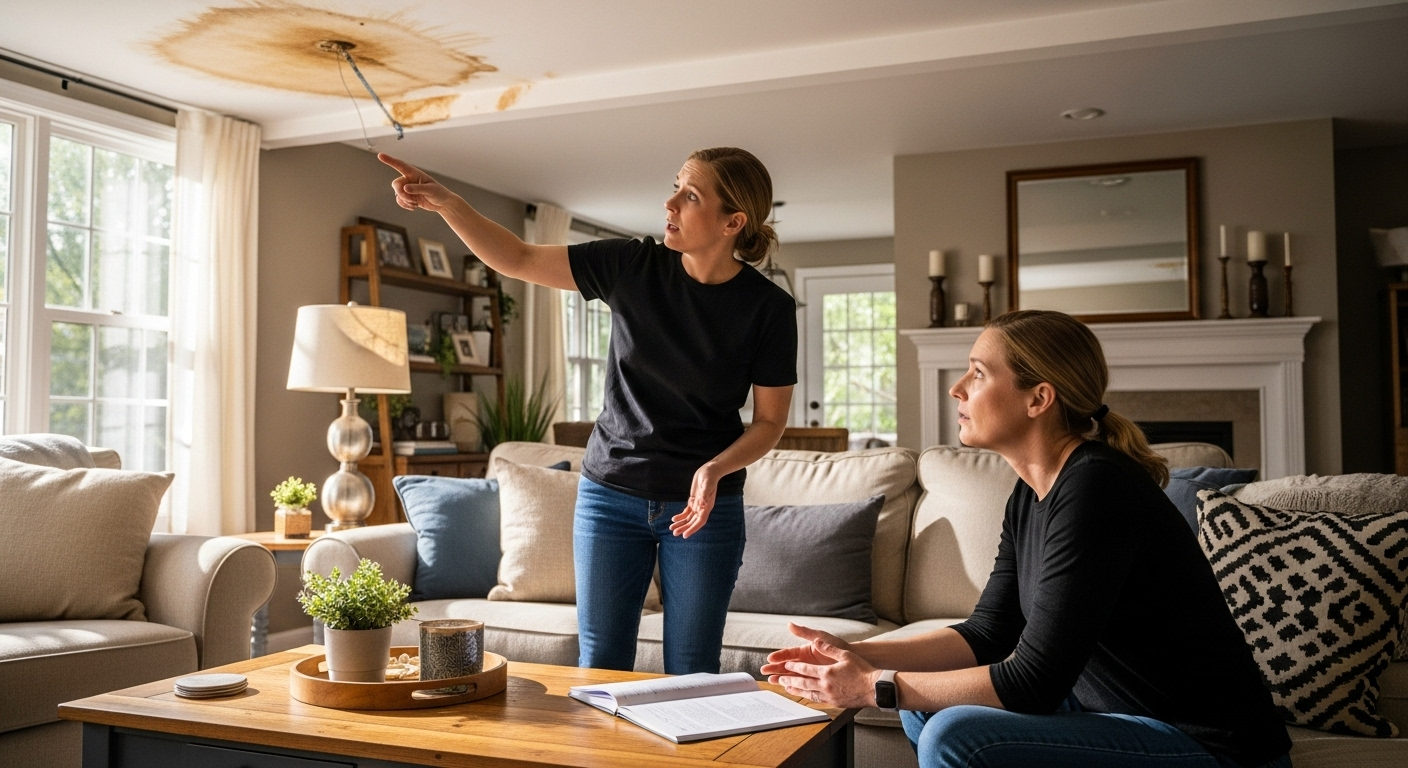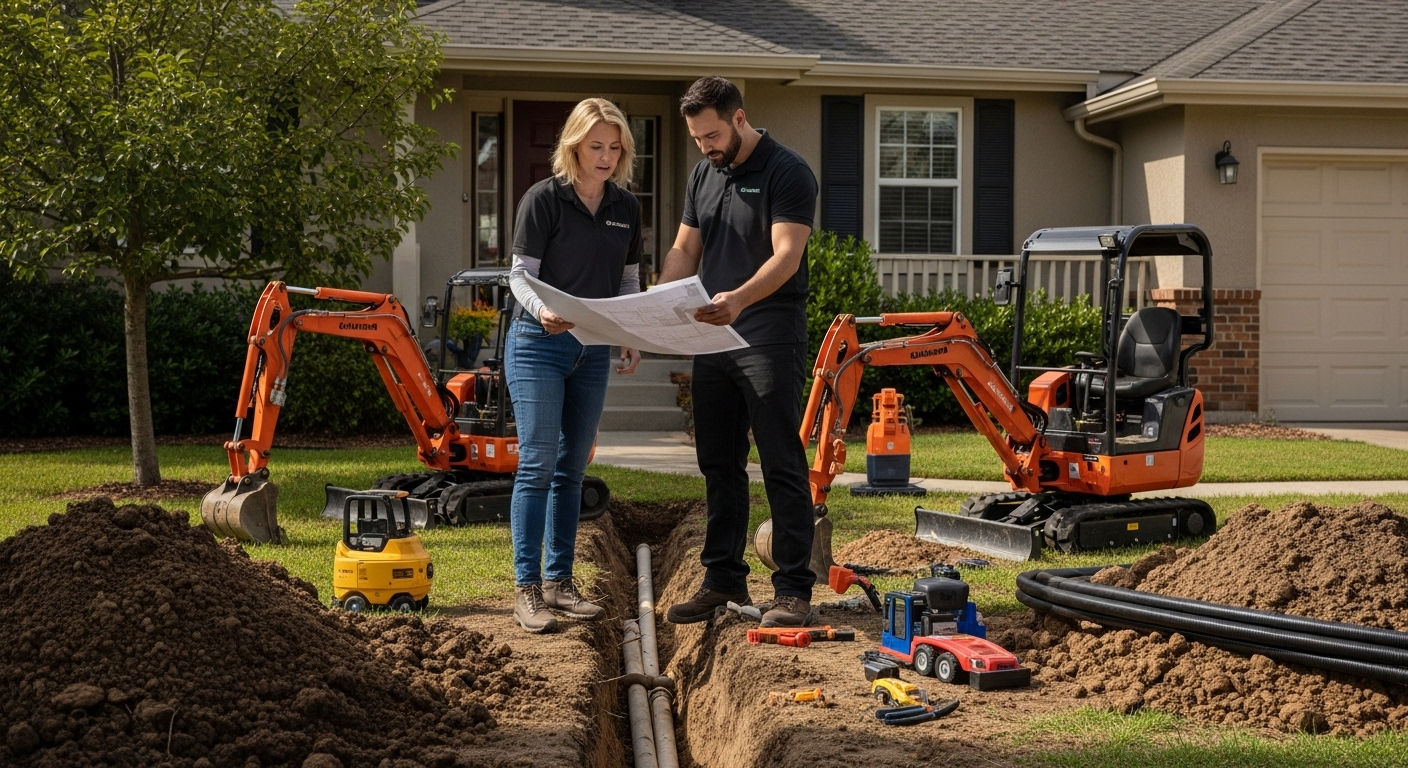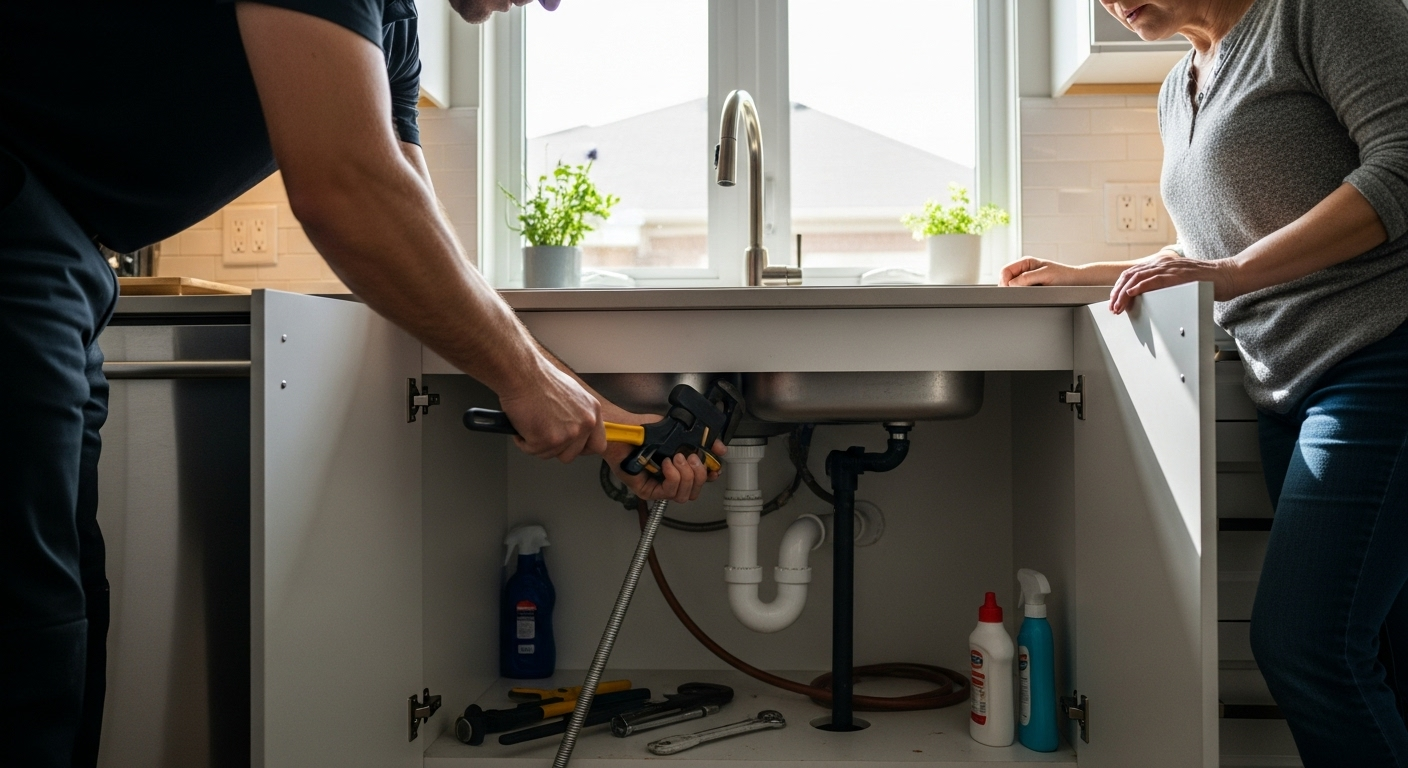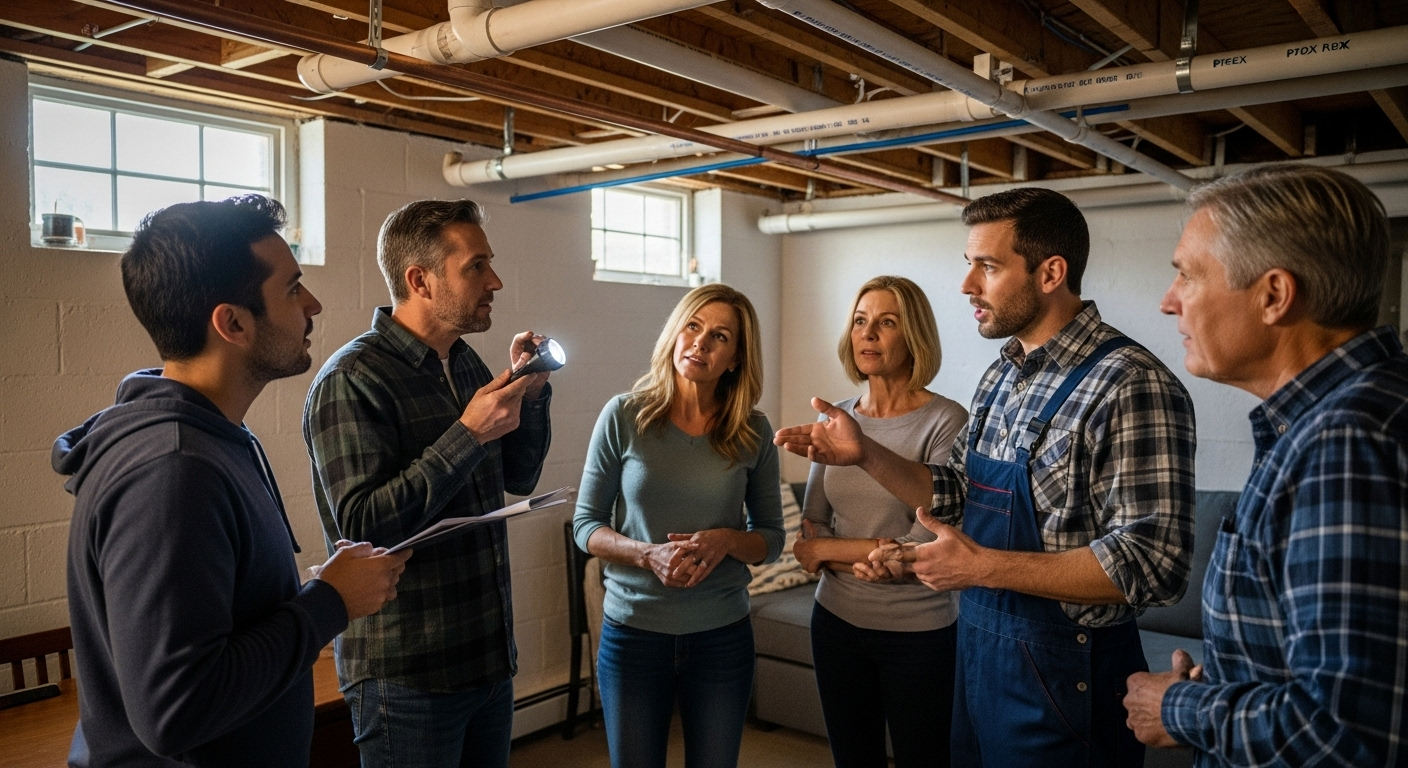Understanding Landscaping and Drainage for Homeowners
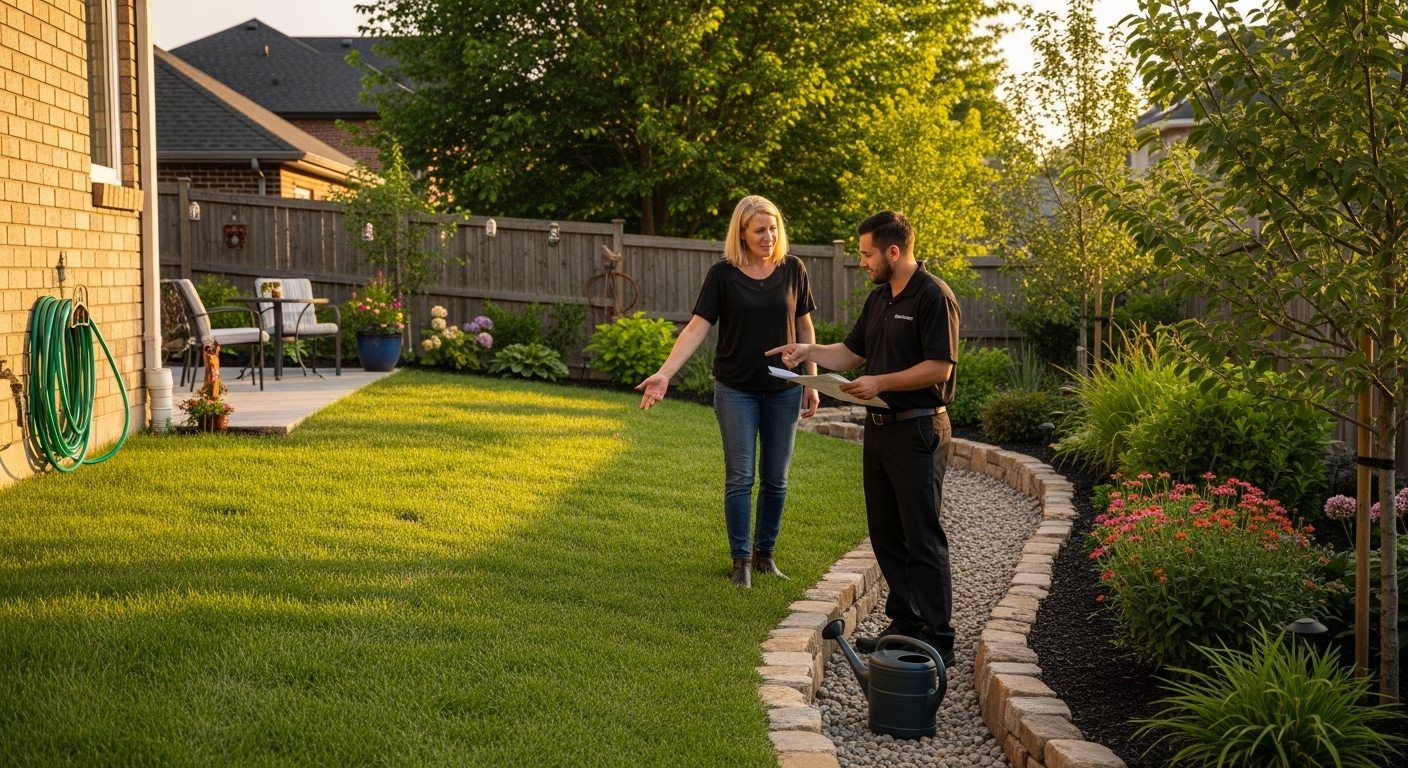
Landscaping and drainage do much more than make your yard look nice. These systems quietly guard your home from costly water damage and messy flooding. What might surprise you is that preventative water management costs far less than repairing water damage, which can easily reach tens of thousands of dollars . Many people focus on plants and patios, but the real difference comes when water is steered safely away from your foundation. The science behind these outdoor systems changes the way homes survive our wettest months.
Table of Contents
Quick Summary
| Takeaway | Explanation |
|---|---|
| Proper landscaping protects your home | Thoughtful design directs water away from foundations, reducing moisture risks. |
| Investing in drainage saves money | Preventative drainage measures avoid costly repairs from water damage over time. |
| Use native plants for better drainage | Indigenous plants improve soil absorption and reduce runoff, supporting healthy landscapes. |
| Strategic grading is essential | A minimum 2% slope away from structures enhances natural water flow and protection. |
| Implement multi-component drainage systems | Combine surface and underground options for effective water management and property health. |
What is Landscaping and Drainage?
Landscaping and drainage are interconnected systems that manage water flow around residential properties, protecting homes from potential water damage and maintaining outdoor environments. At its core, landscaping involves designing and modifying outdoor spaces, while drainage focuses on efficiently directing water away from critical infrastructure.
Understanding Landscape Water Management
Landscaping goes beyond aesthetic appeal. It plays a crucial role in water management by creating strategic pathways that guide rainwater and runoff away from foundations, preventing potential moisture infiltration. Proper landscaping considers terrain, soil composition, plant selection, and grading to ensure water moves naturally and safely.
Key landscape water management principles include:
- Creating gentle slopes that direct water away from building structures
- Selecting native plants with robust root systems that enhance soil absorption
- Implementing strategic ground cover to reduce erosion and water runoff
The Science of Residential Drainage Systems
Drainage systems are engineered solutions designed to control water movement. These systems include underground pipes, surface grading, downspouts, and strategically placed catchment areas that collect and redirect water. Learn more about drainage challenges during rainy seasons to understand potential home water management issues.
A well-designed drainage system prevents water accumulation that could compromise building foundations, landscaping integrity, and overall property health. Effective drainage protects against soil erosion, basement flooding, and potential structural damage . Homeowners must recognize that water always seeks the path of least resistance, making proactive water management essential.
By understanding landscaping and drainage principles, property owners can create resilient outdoor environments that protect their investments and maintain beautiful, functional spaces.
Why Landscaping and Drainage Matter for Your Property
Proper landscaping and drainage are not just aesthetic choices but critical protective strategies for residential properties. They serve as fundamental mechanisms that safeguard your home against potential water damage, soil erosion, and structural compromise.
Financial and Structural Protection
Investing in effective landscaping and drainage systems can prevent expensive repairs and potential property value depreciation. Water damage represents one of the most significant threats to residential structures, with potential repair costs ranging from thousands to tens of thousands of dollars. Preventative water management is significantly more cost-effective than reactive damage control .
Key financial considerations include:
- Preventing foundation damage that could compromise structural integrity
- Reducing potential basement flooding risks
- Minimizing soil erosion that can destabilize property grounds
Environmental Impact and Property Health
Landscaping and drainage systems play a crucial role in managing environmental interactions with your property. They create natural water channels that protect not just buildings but also surrounding ecological systems. Learn more about comprehensive home waterproofing strategies to understand comprehensive property protection.
Native plant selections and strategic landscape design can enhance water absorption, reduce runoff, and create natural barriers against potential water damage. These systems work together to maintain soil health, prevent erosion, and create a sustainable outdoor environment that protects your property.
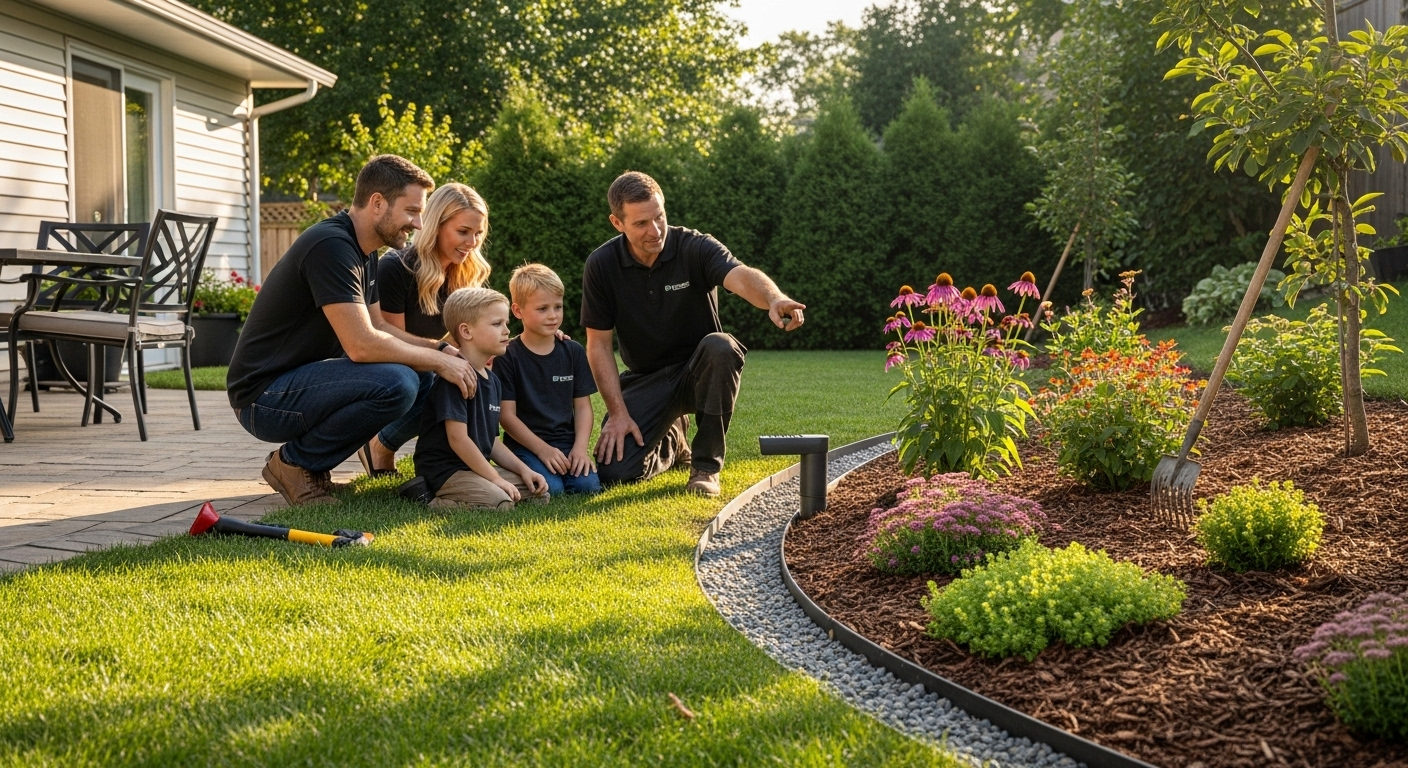
By understanding and implementing robust landscaping and drainage solutions, homeowners can protect their most significant investment while creating beautiful, functional outdoor spaces that work harmoniously with natural environmental processes.
How Landscaping and Drainage Systems Function
Landscaping and drainage systems work as intricate networks designed to manage water movement, protect property infrastructure, and maintain environmental balance. These systems leverage natural principles and engineered solutions to control water flow, prevent potential damage, and create sustainable outdoor environments.
Water Flow Dynamics and Grading
The fundamental mechanism of drainage systems relies on gravitational principles and strategic land grading . Proper landscape design creates gentle slopes that direct water away from building foundations, utilizing gravity to naturally channel water towards designated drainage areas. Learn more about preventing basement drain backups during heavy rainfall to understand potential water management challenges.
Key water flow management strategies include:
- Creating a minimum 2% slope away from building foundations
- Installing underground drainage pipes with appropriate gradients
- Implementing surface drainage solutions like swales and catchment areas
Components of Effective Drainage Systems
A comprehensive drainage system integrates multiple components working synergistically to manage water movement. These include surface drainage elements like downspouts, underground perforated pipes, French drains, and strategically placed catch basins that collect and redirect water efficiently.
Drainage system components function through interconnected mechanisms :
- Collecting surface runoff from roofs, driveways, and landscaped areas
- Channeling water through underground pipe networks
- Dispersing water into appropriate drainage zones away from critical infrastructure
By understanding these intricate systems, homeowners can develop proactive strategies that protect their properties from water-related damage while maintaining healthy, sustainable outdoor environments.
Below is a table outlining key components of effective residential drainage systems and their primary functions to help homeowners understand their roles in water management.
| Component | Primary Function |
|---|---|
| Downspouts | Direct roof water safely away from foundation |
| Underground Drain Pipes | Channel collected water through property safely |
| French Drains | Collect and disperse groundwater/runoff below surface |
| Catch Basins | Collect surface water and direct it into drainage system |
| Swales | Guide surface water towards collection/dispersal zones |
| Slope/Grading | Create gravity-driven paths for natural water movement |
Key Concepts in Landscaping and Drainage Design
Landscaping and drainage design represent sophisticated approaches to managing water interaction with residential properties. These disciplines combine environmental science, engineering principles, and strategic planning to create sustainable outdoor spaces that protect infrastructure and promote ecological balance.
Soil Composition and Water Absorption
Soil type fundamentally determines drainage effectiveness . Different soil compositions interact uniquely with water, influencing how quickly moisture moves through ground layers.
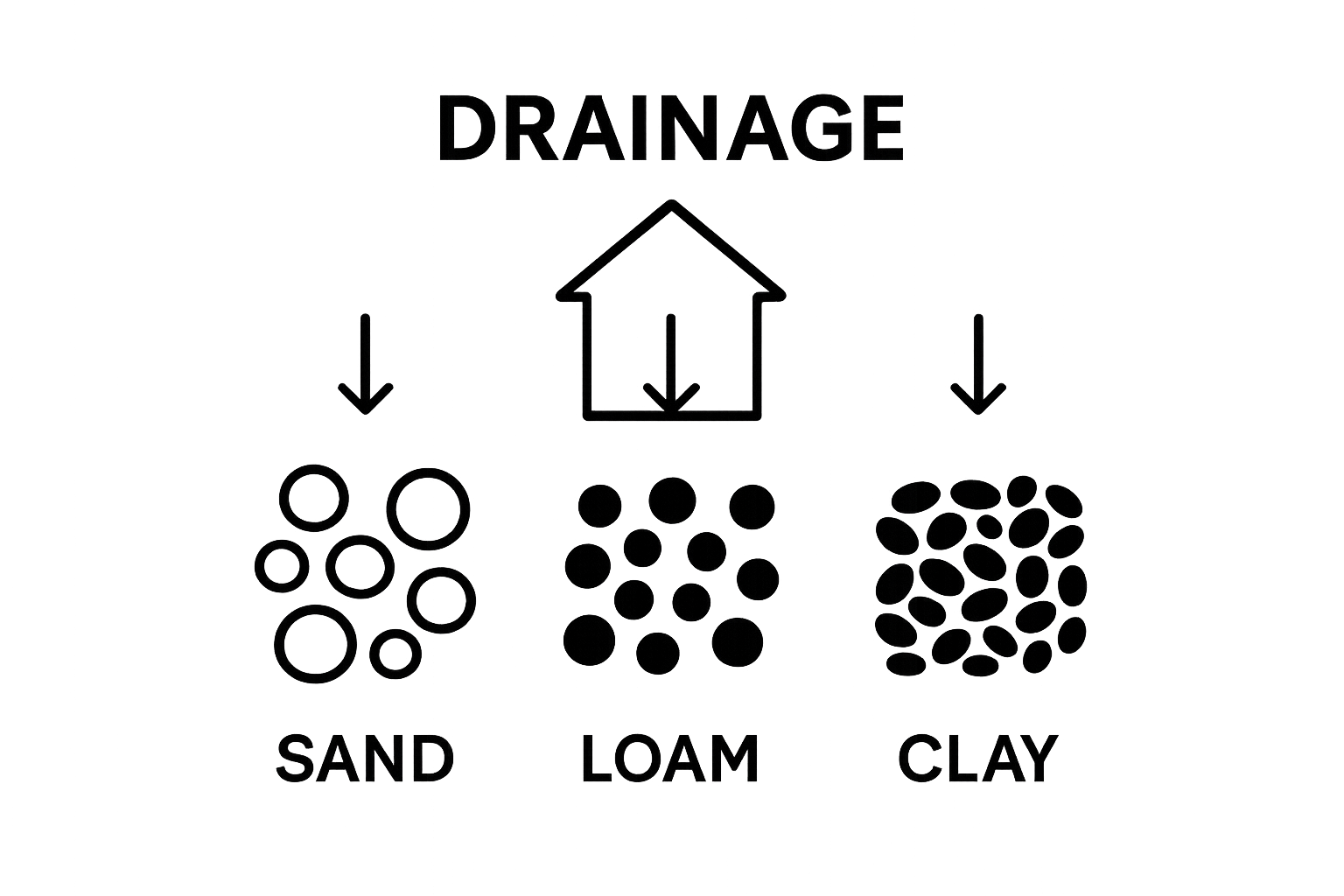 Sandy soils provide rapid water movement, while clay-rich soils create slower drainage conditions that require more sophisticated management strategies. Learn more about renovation planning and plumbing considerations
to understand how foundational elements impact water management.
Sandy soils provide rapid water movement, while clay-rich soils create slower drainage conditions that require more sophisticated management strategies. Learn more about renovation planning and plumbing considerations
to understand how foundational elements impact water management.
Key soil assessment factors include:
This table compares common soil types mentioned in the article, summarizing their drainage properties to guide homeowners in assessing potential landscape drainage outcomes.
| Soil Type | Drainage Speed | Water Retention | Implications for Drainage Design |
|---|---|---|---|
| Sandy Soil | Fast | Low | Rapid drainage, reduced runoff, risk of dryness |
| Clay Soil | Slow | High | Poor drainage, potential for waterlogging |
| Loamy Soil | Moderate | Moderate | Balanced absorption, generally favourable |
- Measuring soil permeability and water retention capacity
- Understanding local geological characteristics
- Evaluating ground composition for potential drainage challenges
Topographical Design Principles
Topography plays a critical role in designing effective drainage systems. Precise land grading creates natural water channeling mechanisms that direct moisture away from critical infrastructure. Professional landscapers use advanced techniques to create subtle slopes and contours that leverage gravitational forces for water management.
Essential topographical design considerations involve:
- Establishing minimum 2% gradient away from building foundations
- Creating strategic elevation changes
- Implementing natural and engineered water diversion pathways
By comprehensively understanding these key design concepts, homeowners can develop robust landscaping and drainage solutions that protect property investments while creating beautiful, functional outdoor environments.
Real-World Applications of Landscaping and Drainage
Real-world landscaping and drainage applications transform theoretical concepts into practical solutions that protect residential properties and enhance outdoor environments. These strategies go beyond aesthetic improvements, providing critical infrastructure protection and environmental management.
Residential Property Management
Effective landscaping and drainage solutions prevent potential water damage and structural issues . Homeowners can implement targeted strategies that redirect water flow, protect foundation integrity, and create resilient outdoor spaces. Understand more about preventing plumbing challenges during seasonal changes to complement your drainage management approach.
Key residential drainage applications include:
- Installing French drain systems around foundation perimeters
- Creating strategic grading to direct water away from buildings
- Implementing rain gardens to manage stormwater runoff
Ecological and Environmental Considerations
Landscaping and drainage designs play a crucial role in maintaining local ecosystem balance. Native plant selections and strategic water management techniques can significantly reduce soil erosion, enhance groundwater recharge, and create sustainable outdoor environments.
Environmental drainage design principles involve:
- Selecting indigenous plant species with robust root systems
- Creating bioswales that naturally filter and redirect water
- Minimizing impermeable surface areas to promote natural water absorption
By understanding and implementing these real-world applications, homeowners can develop comprehensive landscaping and drainage strategies that protect their properties while contributing to broader environmental sustainability efforts.
Protect Your Home with Expert Drainage and Landscaping Solutions
Worried about water damaging your foundation or unpredictable drainage around your property? As discussed in this article, effective landscaping and proper drainage are essential for maintaining your home’s value and preventing serious issues like basement flooding, soil erosion, and structural damage. Do not let unmanaged water flow put your investment at risk—DrainWorks Plumbing brings over 30 years of proven expertise in Toronto, delivering tailored residential plumbing and drainage services that directly address these exact pain points.

Ready to safeguard your space? Choose a team recognized as the Best Plumbers in Toronto and trusted for honest pricing, award-winning service, and dependable solutions. Discover more by visiting our DrainWorks Plumbing website and reach out today for support with waterproofing, drain repairs, and landscape water management. Take action now and give your home the protection it deserves.
Frequently Asked Questions
What is the role of landscaping in water management?
Landscaping plays a crucial role in water management by creating pathways that guide rainwater and runoff away from foundations, preventing moisture infiltration and potential water damage.
How do drainage systems work to protect my home?
Drainage systems control water movement using underground pipes, surface grading, and catchment areas to redirect water away from critical infrastructure, protecting against water accumulation that could potentially damage foundations and landscaping.
What are some effective landscaping strategies for managing water runoff?
Effective landscaping strategies include creating gentle slopes to direct water away from homes, selecting native plants with deep root systems for enhanced soil absorption, and using ground cover plants to reduce erosion and runoff.
What factors should I consider when designing a drainage system?
When designing a drainage system, consider soil composition, local topography, required grading, and the integration of components like downspouts, French drains, and catch basins to ensure effective water management.



